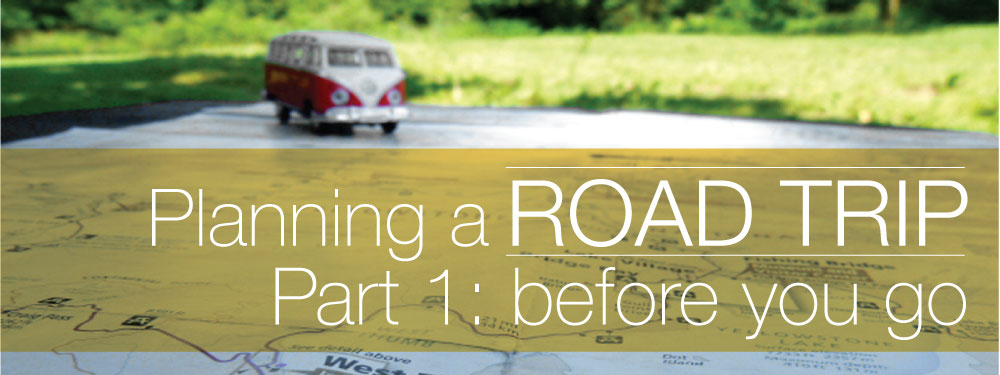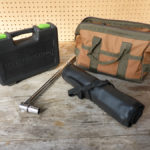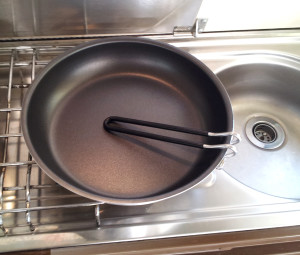Navigation and travel apps for your mobile device help you find campsites, points of interest, and the routes to get there, or even to make reservations while you’re still en route.
Here are some of the Camp Westfalia crew’s favorites …
Camping
 VanAlert
VanAlert
Among all the other great features of VanAlert is a directory of user-submitted favorite camping spots to help you find a place to call home for the night. You can even find other VW Vanagon/Bus owners who have volunteered the temporary use of their driveway for short stays while traveling.
Kampnik
Kampnik is built on the venerable USCAmpgrounds.info database of more than 13,000 campgrounds in the United States and Canada with a focus on public car-accessible campgrounds whose existence and location has been verified by a human. With Kampnik, you can find public campgrounds in National Parks, National Forests, Provincial Parks, State Parks, City and County Parks, and more on federal, state, provincial, and local lands. From beaches to mountains and rivers to deserts, Kampnik will help you find campgrounds for the places you want to go.
iOverlander
iOverlander is a free site (and phone apps) created to help overlanders on the road find their next destination. Please help us make this site great by updating our information and adding places you have been.
 Allstays
Allstays
The number one camping app for iPhone, iPads and iPods. From resorts to hike-in spots. Amenities, maps, truck stops, rest areas, Wal-mart and casino parking, RV dealers, sporting goods stores and much more. Two modes: one uses GPS and maps that you can filter. One is an offline manual lookup mode for when you don’t have service.
WikiCamps
Plan your next adventure using the WikiCamps Trip Planner. Create unlimited trips, add multiple locations, notes, and custom map pins. The ultimate camping companion for your smart phone, tablet and Windows 10 PC. USA’s largest database of campgrounds, RV parks, backpacker hostels, points of interest, dump stations, visitor information centers, water taps, toilets, showers, and more.
KOA (Kampgrounds of America)
Search KOA’s huge selection of campgrounds to find your perfect fit. Search by city, state or attractions. Or find a nearby KOA campground based on your current location. Get detailed campground descriptions, hot deals, driving directions, as well as descriptions of local attractions and local and campground activities.
https://koa.com/get-the-koa-app/
Roadtrippers
Enter where you want to start and finish your road trip, and then discover the coolest “off the beaten path” places along the way. Our database includes millions of the world’s most fascinating places, making planning the unexpected easier than you thought. Road trip planning can be tedious… and what do you get from it? Most of what you find online will funnel you into the same places, filled with other travelers. It can feel like you need a local guide to get an authentic experience on your trip, but Roadtrippers helps you escape the tourist bubble and find the coolest stops.
Ultimate Campgrounds
Thousands and thousands of public camping sites across the US and Canada – free, dispersed and formal campsites
http://www.ultimatecampgrounds.com/
 Freecampsites
Freecampsites
Freecampsites.net is the primary source for information on free campgrounds and boondocking locations. We believe that free camping sites are often the most beautiful and peaceful camp sites. There are many free camp sites, but they can be difficult to locate. Here, we provide a simple, map-based search engine for free and cheap camping locations. It is also a platform for sharing locations you have discovered with others.
Hipcamp
Book unique camping experiences on over 300,000 campsites, cabins, RV parks, public parks and more. Hipcamp is everywhere you want to camp. Search, discover and book ranches, farms, vineyards, nature preserves & public sites for camping across the U.S.
From public parks to private land, we’re the most comprehensive guide to camping in the nation.
Park4Night
Perhaps the most wide ranging of all the camping apps, Park4Night helps you find camping and parking spots from Afghanistan to Zimbabwe.
Search user-submitted parking & camping spots on your smartphone or car GPS unit, enjoy your camp, then leave your new comments or updates for future travelers.
One intrepid Camp Westfalia reader reports having wild camped all over Europe using this app.
Other
Waze
Waze helps riders and drivers get where they’re going—faster, smoother, safer, and happier—while working to beat traffic. Traffic starts with us, but it can end with us, too. Waze develops practical solutions that empower people to make better choices, from taking the fastest route, to leaving at the right time, to sharing daily commutes.
GasBuddy
Over the last 15 years, GasBuddy has saved users over $2.9 billion dollars. Download our easy-to-use app to start saving at the pump, complete fun challenges and win free gas today
Chimani
Chimani is the leading national park mobile app. Our intuitive app draws on the power of GPS-enabled interactive mapping technology to guide your national park adventures. Chimani’s national park guides include descriptions of points of interest, trails, amenities, and more. “No service” when you’re out in the wilderness? No problem. Chimani’s app works with or without WiFi or data signal. Chimani’s app is free to download from the Apple Appstore and Google Play.
Dark Sky
Dark Sky is the most accurate source of hyperlocal weather information. With down-to-the-minute forecasts, you’ll know exactly when the rain will start or stop, right where you’re standing. It’s almost like magic.
Powered by our own homegrown weather service, Dark Sky is the best source of accurate weather forecasts to help you plan your life.
 Star Walk
Star Walk
Star Walk 2 is an exquisite stargazing tool that combines astronomical data with premium technology to deliver an effortless journey through thousands of stars, comets, and constellations. All you have to do is point your phone or tablet at the sky.
http://www.vitotechnology.com/star-walk-2-guide-sky-night-day.html































































